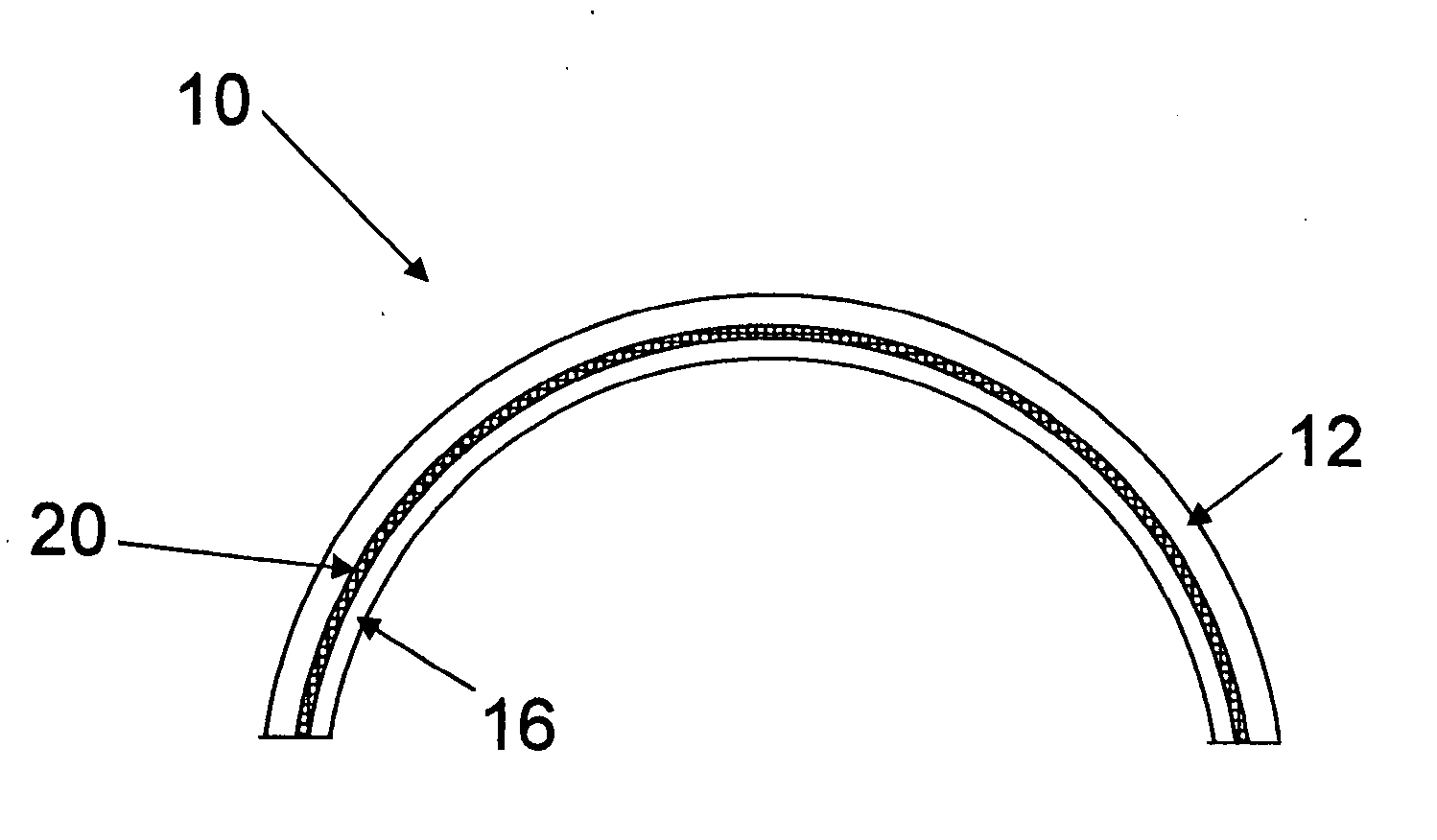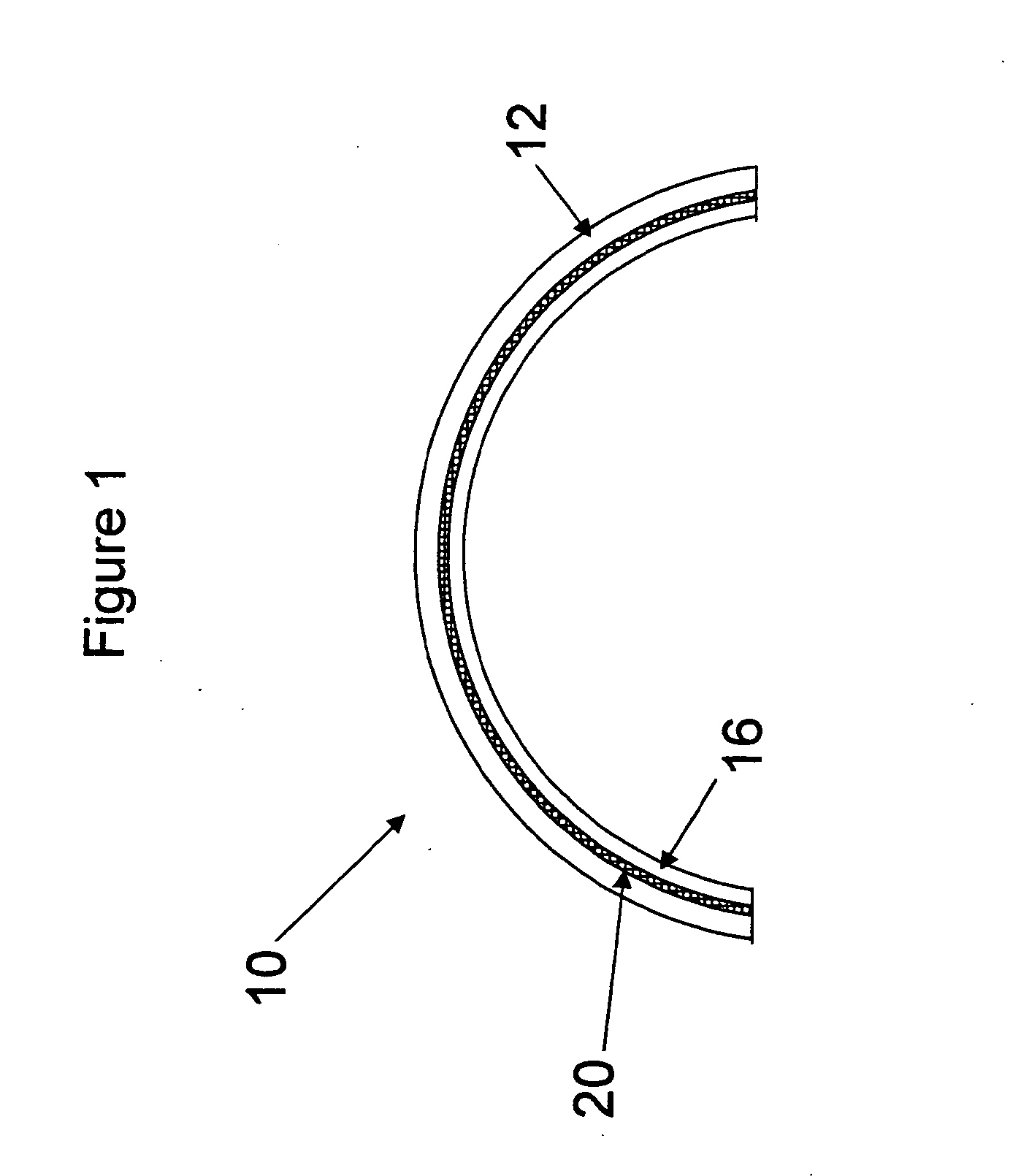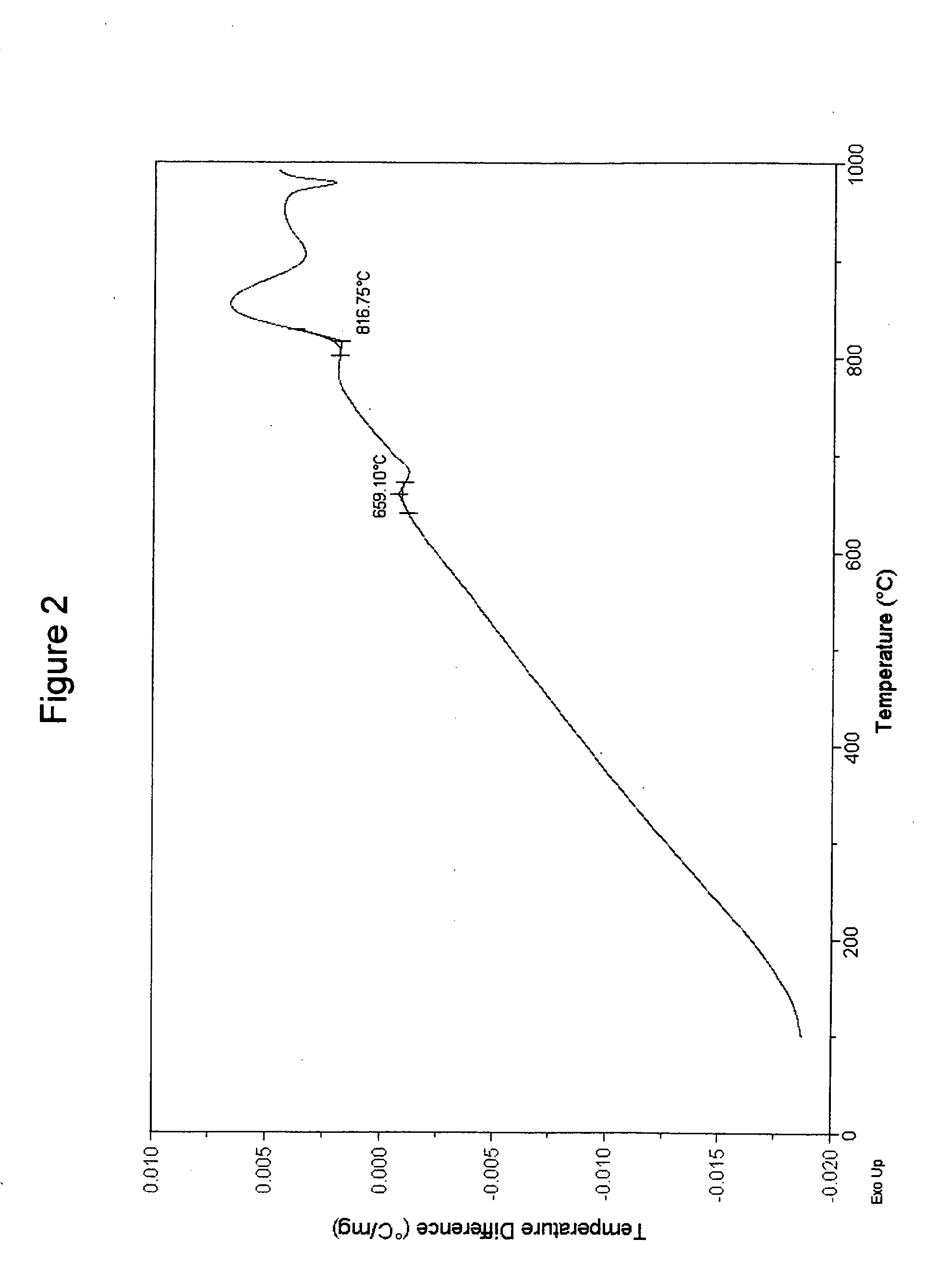Low loss visible-IR transmitting glass-aluminum oxynitride composites and process
a technology of aluminum oxide and visible ir, applied in the field of germanate glass composites, can solve the problems of high grinding and polishing cost, easy scratching of zns, and inability to be useful in rugged environments, and achieve the effect of saving polishing cos
- Summary
- Abstract
- Description
- Claims
- Application Information
AI Technical Summary
Benefits of technology
Problems solved by technology
Method used
Image
Examples
example 1
[0047] This example demonstrates preparation of BGG glass of this invention.
[0048] Pursuant to this example, a 200 gram-batch of the approximate composition of 15 BaO-10 Ga2O3-5 Al2O3-70 GeO2 was prepared by mixing 46.74 grams of BaCO3, 29.6 grams of Ga2O3, 8.05 grams of Al2O3 and 115.61 grams of GeO2. The glass batch was mixed for 30 minutes and then transferred to a platinum crucible. The platinum crucible, containing the batch material, was placed in a pre-melting furnace preheated to 1350° C. The batch material was left in the furnace to melt for 10 minutes and then quenched in air to make a cullet. The cullet was then transferred to another crucible that was loaded into a sealed furnace with a controlled atmosphere. The furnace was heated to 1300° C. under Ar / O2 atmosphere. The glass was bubbled with 80 / 20 mol ratio Ar / O2 mixture for 9 hours to remove water. After 9 hours of bubbling, the bubbling tube was pulled out of the melt, with the Ar / O2 gasses still flowing over the me...
example 2
[0049] This example demonstrates joining a BGG glass substrate to an AlON substrate.
[0050] Glass of 12.5 BaO-2.5 BaCl2 -10 Ga2O3 -5 Al2O3 -70 GeO2 composition, was obtained by the procedure described in Example 1, was cut into a 1″-diameter disc of 1.5 mm thickness. The glass was polished on the inner surface, using a final 800 grit paper. The glass and the AlON substrates were cleaned using isopropyl alcohol and then placed in direct contact under a mild vacuum of less than 1 Torr and under a load to obtain a pressure of about 100 psi during the bonding, i.e., heat treatment process. The samples were heated together from room temperature to 760° C. at a heating rate of 5° C. per minute. The samples were held at 760° C. for 1 hour and then cooled to 680° C. at a cooling rate of 5° C. per minute. The samples were then held at 680° C. for 6 hours for annealing followed by slow cooling at a rate of 0.1° C. per minute down to room temperature. The product was a composite of the BGG and...
example 3
[0051] A polished AlON dome of dimensions 1.69 inches outside radius, 1.56 inches inner radius with a dome thickness of 0.13 inches and dome height of 1.54 inches was obtained. BGG glass dome was made by using a glass melting process described in Example 1, above, and cast into dome shape and annealed at 680° C. The glass dome was ground and polished to the dimensions of 1.56 inches outer diameter, 1.52 inches inner diameter with a thickness of about 0.04 inches and dome height of 1.41 inches. The outer surface of the glass dome and inner surface of the AlON dome were cleaned in isopropyl alcohol. The BGG glass dome was fully placed inside the AlON dome to make full contact between outer surface of the BGG dome and the inner surface of the AlON dome. The domes were heated together using heating cycle described in Example 2, above, to bond and anneal the BGG and the AlON domes. A BGG-AlON composite dome was obtained with a very strong bond in between. The bonded dome was repeatedly c...
PUM
| Property | Measurement | Unit |
|---|---|---|
| wavelength | aaaaa | aaaaa |
| glass transition temperature | aaaaa | aaaaa |
| thickness | aaaaa | aaaaa |
Abstract
Description
Claims
Application Information
 Login to View More
Login to View More - R&D
- Intellectual Property
- Life Sciences
- Materials
- Tech Scout
- Unparalleled Data Quality
- Higher Quality Content
- 60% Fewer Hallucinations
Browse by: Latest US Patents, China's latest patents, Technical Efficacy Thesaurus, Application Domain, Technology Topic, Popular Technical Reports.
© 2025 PatSnap. All rights reserved.Legal|Privacy policy|Modern Slavery Act Transparency Statement|Sitemap|About US| Contact US: help@patsnap.com



